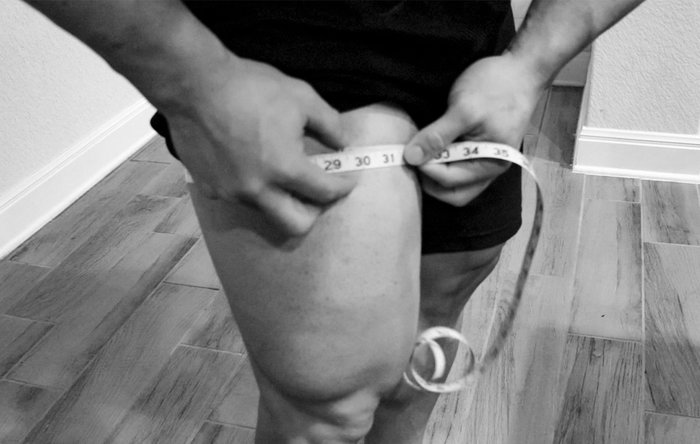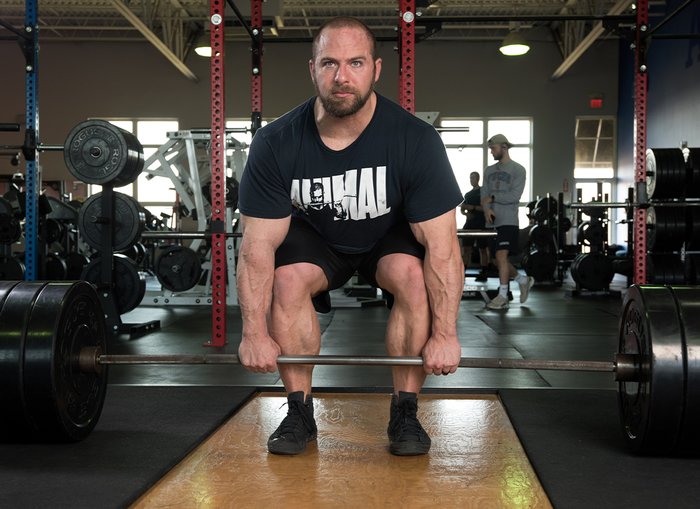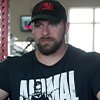Developing a physique that is well muscled and stripped of excess body fat is the main goal for bodybuilding success. However, no one should try to stay in contest shape year-round. It’s unrealistic and unhealthy.
If your body-fat levels fall too low in the off-season, you won't see the gains you need to improve. But if you’re not careful, fat gain will outweigh muscle gain. The downside to gaining too much body fat is an aggressive contest prep that will require you to lose so much fat that whatever muscle you did add will likely fall off with it.
Some body fat will inevitably accrue during the off-season, and that’s OK. That said, there are ways to stay relatively lean without limiting off-season muscle growth.
Here are my top five tips to avoid the off-season pitfalls and get your physique right where you want it to be for cutting season:
1. Use a Variety of Tools to Track Progress
When the off-season approaches, many lifters will hang up their posing trunks and bring out the sweatpants. Those areas we tend to carry the most fat on the body are no longer seen. So, let’s be real and keep tabs on the important variables so that Marshmallow Man doesn't slowly appear beneath the baggy clothing.
I highly recommend taking progress pictures and comparing them from week to week. Can you see changes in muscle fullness? Are you looking softer? Make sure to keep abs and quad lines visible year-round. For guys, the lower back and glutes are typically the quickest to gain fat, so watch those regions closely, but don’t obsess over them.
Also, measurements aren't just for dieting season. Take body fat and circumference measurements regularly as an objective way to see if you are gaining muscle versus fat. If your waist size is up 2 inches and your arms haven’t grown at all, consider adjusting your approach.

Also, I always preach tracking your lifts in the gym. For example, if you are trying to widen your back, make sure your pull-downs and barbell rows are increasing in weight and reps over the course of the off-season.
The final and most obvious factor is the scale weight. It is reasonable to allow a 1-2-percent increase in body weight per month for those seasoned to training. So long as you stay in that range, you're golden.
2. A Caloric Surplus Is Necessary—But Don’t Overdo It
There’s no way around it: Weight gain requires being in a caloric surplus. If you plan to add muscle, you must consume a surplus of protein, carbs, and calories. As anyone who has watched Animal’s Big on a Budget videos knows, it doesn’t need to cost a fortune, either. But when you exceed the number of calories needed for building muscle, that excess is likely to be stored as body fat.
Hitting the right calorie starting point is very important. A good rule of thumb is 14 calories per pound of body weight. For example, a 200-pound man would start at 2,800 calories. From there, increase your calories by 10 percent to put yourself into a calorie surplus while tracking your progress.
If you gain weight too quickly and look noticeably softer in your progress photos, drop your calories by 5 percent. If you don’t gain at all and see little or no change, bump up your calories by 5 percent. But the key is to give the plan some time to work. Wait two weeks before making changes to your intake.

3. Cycle Your Calories
Calorie cycling is an effective way to meet energy demands and prevent excessive calorie intake. You can easily add fat over time when you have off days from training, yet still eat the same amount of food as a training day. Instead, bring calories back to maintenance level on your days off from training.
Maintaining a caloric surplus only on training days should ensure a steady increase in body weight with minimal fat gain. And the bonus here could be not having to cut your off-season short in attempt to repair the damage of gaining dozens of unwanted pounds.
4. Count Macronutrients, But Be Flexible
Macronutrients matter—not just calories. Since cheat meals are a huge contributor to fat gain in the off-season, try keeping your cheat meals within your macro goals. I'm not suggesting you never go out and enjoy your favorite meal free of constraints. Everyone needs a mental break on occasion, especially when lifting heavy in the off-season. But that doesn't mean you should gorge every weekend on pizza and burgers.
Be creative with your food. If you love spaghetti and pizza but don’t want all the calories, make spaghetti squash or cauliflower instead. Big sushi fan? Count the macros and make it work. If you aren’t overly strict with what you eat, you won’t feel the need to binge.
5. Train Seriously Hard
Want to grow all over, or just bring up a certain area? Either way, train your ass off. If you want muscle gain and not fat gain, your muscles must receive a strong stimulus to grow. Going through the motions at the gym won’t cut it. If you half-ass your workouts, that extra food will wind up as fat, not muscle.

Use a workout log to track workouts and then beat your previous lifts. If you have maxed out the effects of straight sets, add volume, intensity, or both with rest-pause sets or dropsets.
Now is the time when you can make changes to your physique that will pay off for the entire year to come. Don’t waste it! Lean into the challenge. Give your body a message to grow that it can’t ignore, and give it the fuel it needs to make it happen!
